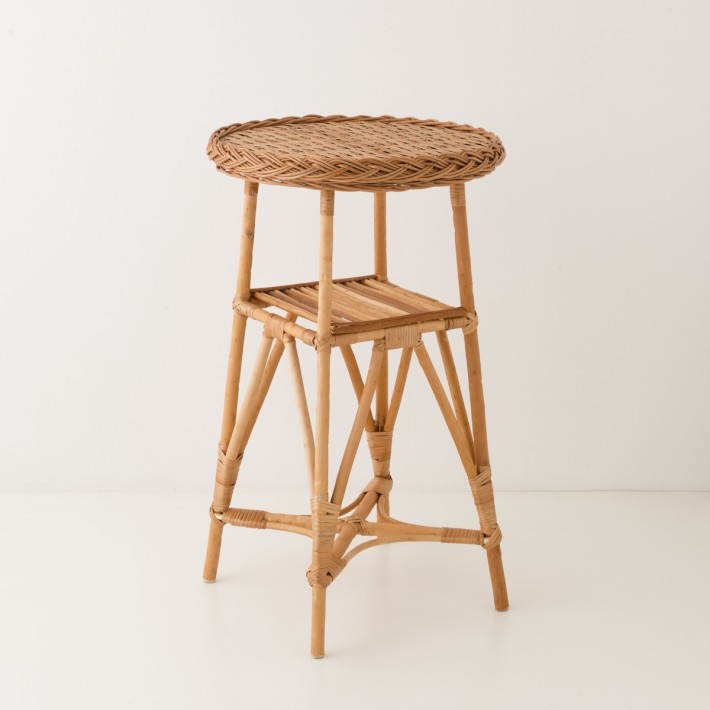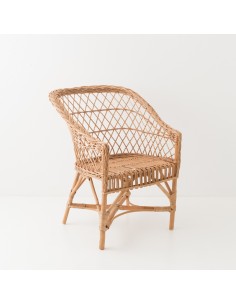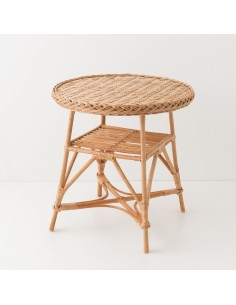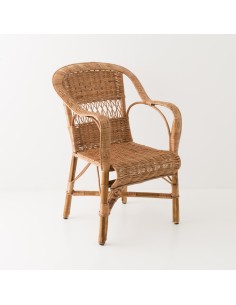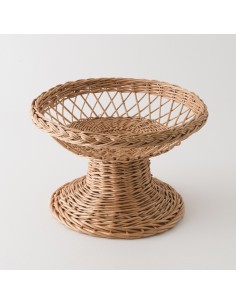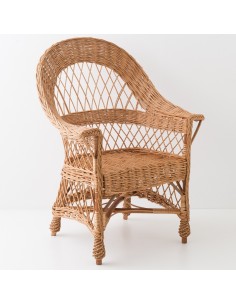Wicker, rattan, what's the difference?
Rattan is a tropical plant (85% comes from Indonesia) related to the palm family which produces a "cane" that is easy to bend (with steam). Rattan allows for tighter curves and finer weaves than wicker, but being less rigid, it requires a heavier frame.
Wicker (another name for willow) grows easily throughout Europe. It does not require any plant protection products or fertilizer. The harvest is completely regenerated each year, so it is a very easily renewable resource. Peeled hot ("buff" wicker with natural copper tones) or cold ("white" wicker), it is most often presented untreated, the willow fibre leaving its smooth and satiny surface to appear "au naturel".
Characteristics and options
Overall dimensions: height 75 x diameter 45, undershelf at height 50 cm, dimensions 25x25 cm. Weight: 3.7 kg. Structure, weaves and arches: natural buff willow (no varnish or stain). Chipboard under the weave. Made in Europe.
A wicker table or pedestal table can be used in a veranda, a winter garden, or outside in good weather and occasionally, but cannot be considered as garden furniture. They are not made to resist to bad weather, humidity, frost, or too long exposure to the sun. Similarly, the Mélina table is woven by hand. Dimensional differences of 1 to 2 cm can be observed, no two are exactly alike.
Maintenance: dust with a damp cloth, avoid commercial cleaning products. In case of heavy soiling, clean with a sponge and soap.

